One of the things that you will often encounter when driving are road warning signs and here in the UK you might find some of them to be eccentric. Below are some of the uncommon warning signs which are not included in the Highway Code test that you might encounter when you drive in the UK.
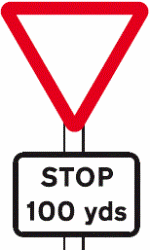 |
Distance to ‘STOP’ line ahead. This is a compulsory stop sign. Stop your car just before the line. |
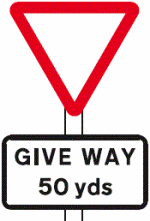 |
Distance to ‘Give Way’ line ahead. |
 |
Low-flying aircraft or sudden aircraft noise. You might not be able to see the runway and that means aircraft could appear unexpectedly. Or it could be a low-flying zone. |
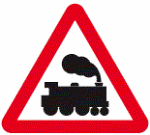 |
Level crossing without barrier or gate ahead. This is an uncontrolled level crossing. Slow down, and look both ways at least twice where you can see up the tracks to make sure there is no train coming. Trains can be moving at speed and they cannot stop quickly. A train vs. your car doesn’t give you much chance of survival. |
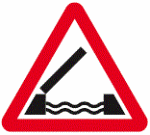 |
Opening or swing bridge ahead. This type of bridge opens either upwards or by swinging or pivoting a portion of it to allow boats with tall masts to pass through. You cannot pass over the bridge while it’s open, even if you are the Dukes of Hazzard. |
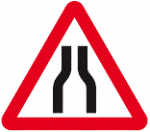 |
Road narrows on both sides ahead. You should be aware of wide vehicles coming towards you. |
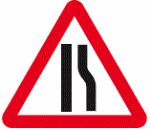 |
Road narrows on right. |
 |
Staggered junction ahead. Watch for cars turning as they will be slowing down. Cars turning right may have to stop in the middle of the road unless there is a turning refuge. |
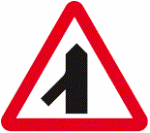 |
Traffic merging from left ahead. Merge like a zip. |
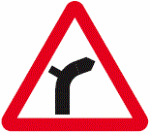 |
Junction on bend ahead. Watch for cars slowing down to turn left on this right-hand bend. |
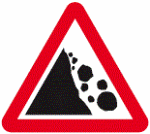 |
Falling or fallen rocks. This is especially likely when it’s been raining as waterlogged ground and running water can reduce the friction of rocks on the surface. It also makes it more likely that slips will occur. |
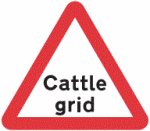 |
Cattle grid ahead. These can be slippery when it is wet or icy. It also indicates that you should look out for cattle on the road. |
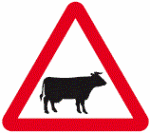 |
Cattle crossing ahead. Be prepared to stop if you see a farmer moving cattle. |
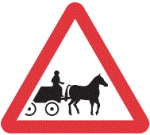 |
Horse drawn vehicle ahead. Give horse-drawn vehicles a wide berth so that you don’t spook the horses. These vehicles will be travelling much slower than you, too. |
 |
Horse riders ahead. Give horses a wide berth, and never sound your horn. If you frighten a horse it can throw the rider into the path of traffic. |
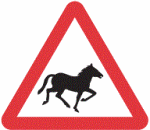 |
Horses crossing ahead. Again, watch your speed, don’t do anything that will frighten the horses. |
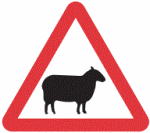 |
Sheep crossing ahead. Be on the lookout for escaped sheep and watch for farmers moving large flocks. A large flock of sheep will pass around your car so be patient and stay still, or edge forwards very slowly. Follow the farmer’s directions. |
 |
Deer crossing ahead. Deer can be unpredictable, and they’re sizable enough to create a lot of damage if you hit them. Their body mass is about at windscreen height, so if you hit one you’ll take the legs from under it and there’s a risk that the body will come in through the windscreen. Deer are nocturnal, and well-camouflaged, so take car when driving at night. |
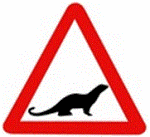 |
Otters crossing ahead. Otters are small and have minimal road sense (though, a lot more than ducks). You might see these signs next to some rivers. |
 |
Red squirrels area ahead. Red squirrels are most active at dawn and dusk, so watch for them on the road. |
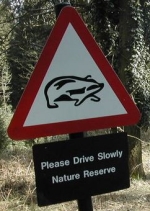 |
Badgers area ahead. Badgers are nocturnal, so watch for them particularly at dusk. |
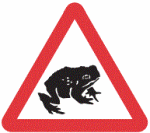 |
Toads area. You may see this next to lakes. |
 |
Police dogs on patrol warning. If you see police officers, follow their directions. And try not to look like a criminal. |
